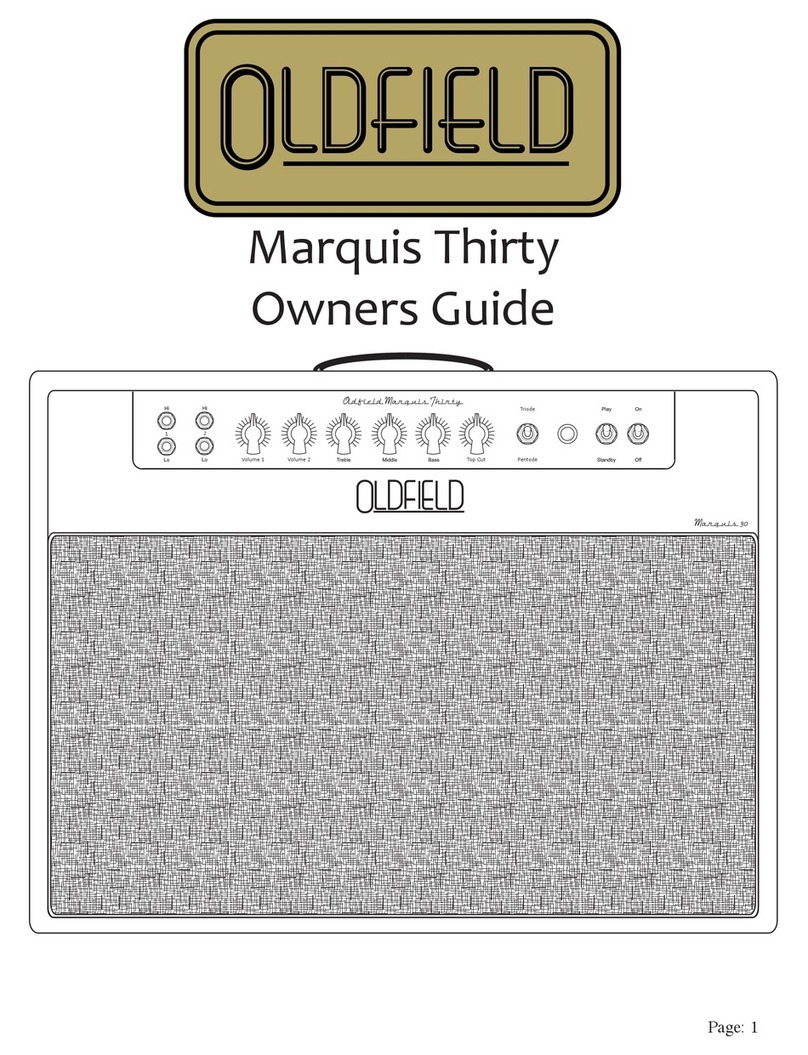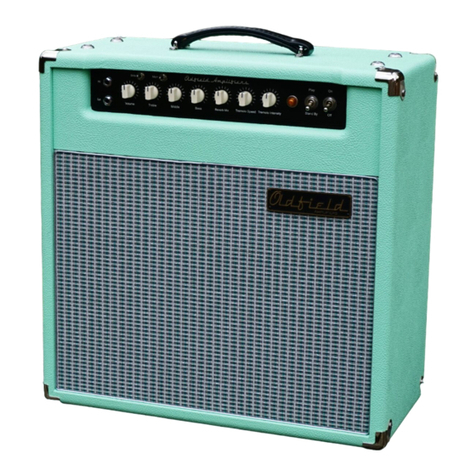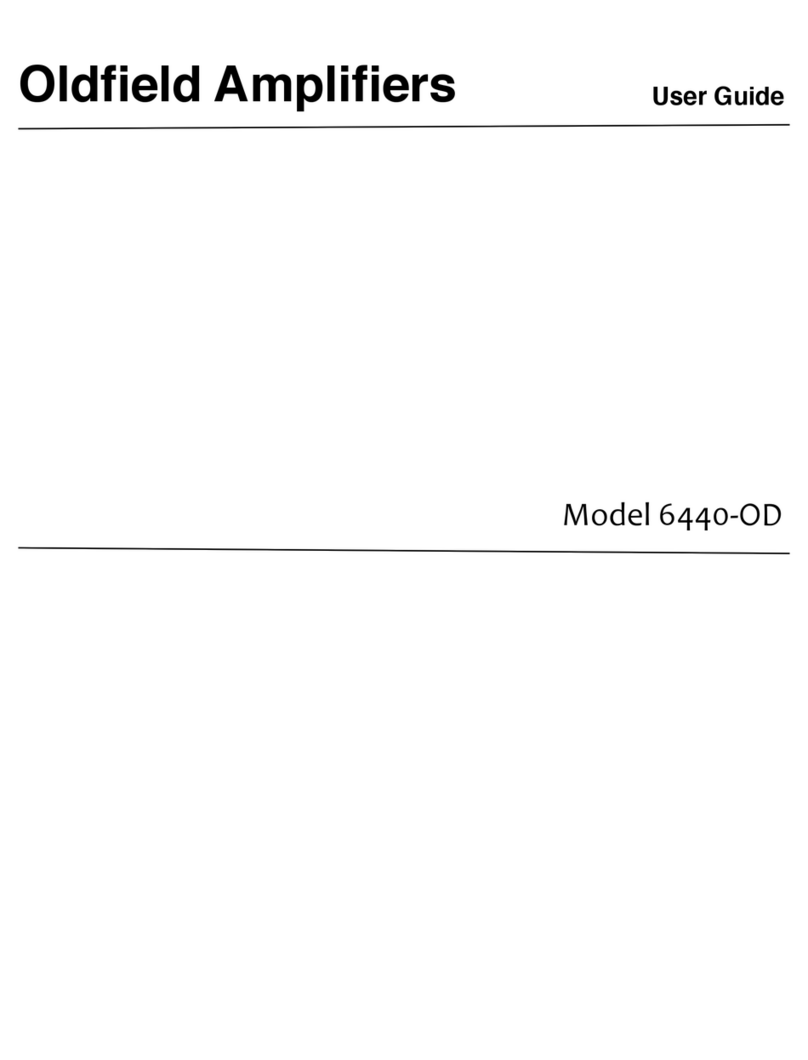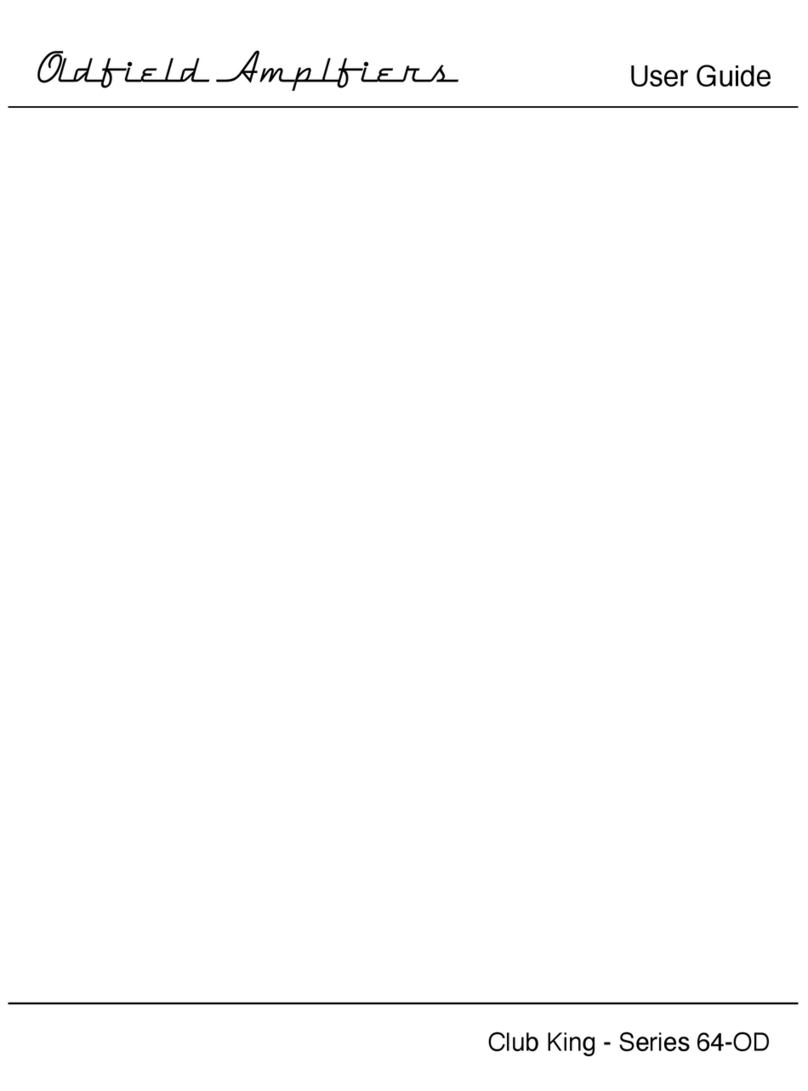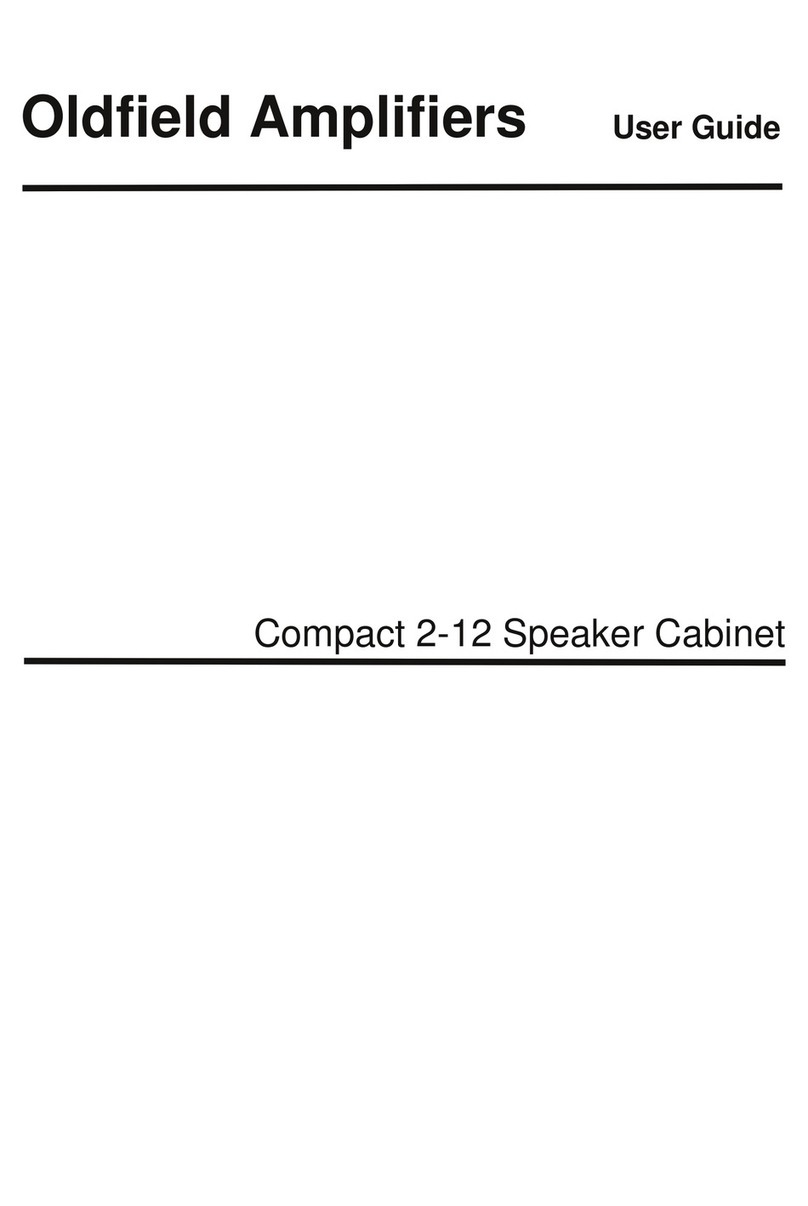1. Amplifier Input: Connect your instrument
with a proper instrument cable to the Amplifier
Input jack.
2. Manual Channel Selector Switch: This
switch is used to select either Channel One or
Channel Two of the amplifier. (Note: The switch
must be in the Channel One position when
operating the amplifier using the foot switch to
change channels.)
3. Gain Mode 1: Controls the volume of the first
gain stage of Channel One. Rotating the control
clockwise will make the Channel One volume
louder and increase overall gain and harmonics.
4. Gain Mode 2: Controls the volume of the
second gain stage of Channel One. Rotating the
control clockwise will make the Channel One
volume louder and increase overall gain and
harmonics. An important item to understand
about the second gain stage of Channel One is
that it is stacked on top of the first gain stage.
When the amplifiers is in Mode 2 the Gain Mode 1
Control and the Gain Mode 2 Control work
together. (Note: The Mode 2 Gain Control has no
effect unless the mode switch on the back panel is
set to the Mode 2 position.)
5. Channel One Treble: Rotating the control
clockwise will increase the high end frequency
output of Channel One.
6. Channel One Middle: Rotating the control
clockwise will increase the mid frequency output
of Channel One.
7. Channel One Bass: Rotating the control
clockwise will increase the low end frequency
output of Channel One.
8. Channel Two Gain: Controls the volume of
Channel Two. Rotating the control clockwise will
make the Channel Two volume louder and
increase overall gain and harmonics.
9. Channel Two Treble: Rotating the control
clockwise will increase the high end frequency
output of Channel Two.
10. Channel Two Middle: Rotating the control
clockwise will increase the mid frequency output
of Channel Two.
11. Channel Two Bass: Rotating the control
clockwise will increase the low end frequency
output of Channel Two.
12. Master: Rotating the control clockwise will
increase the overall volume of the amplifier.
13. Presence: Rotating the control clockwise will
increase the overall top end frequency of the
tone and slightly decrease negative feedback.
14. Indicator Light: On when the amplifier is
receiving electrical power.
15. Off/Standby/Play: When the switch is in the
Off position the amplifier is totally shut down.
With the switch in the middle position the
amplifier is turned on and in Standby mode. With
the switch in the up position the amplifier is ready
to play. When turning the amplifier on it is
recommended that the operator leave the switch
in the Standby position for at least 30 seconds
before moving the switch into the play position.
16. Channel One Mid Boost: When in the ON
position this switch will boost the mid frequencies
of Channel One (Note: The switch must be in the
ON position when operating the amplifier using
the foot switch to control the Channel One Mid
Boost.).
17. Channel Two Mid Boost: When in the ON
position this switch will boost the mid frequencies
of Channel Two (Note: The switch must be in the
ON position when operating the amplifier using
the foot switch to control the Channel Two Mid
Boost.).
